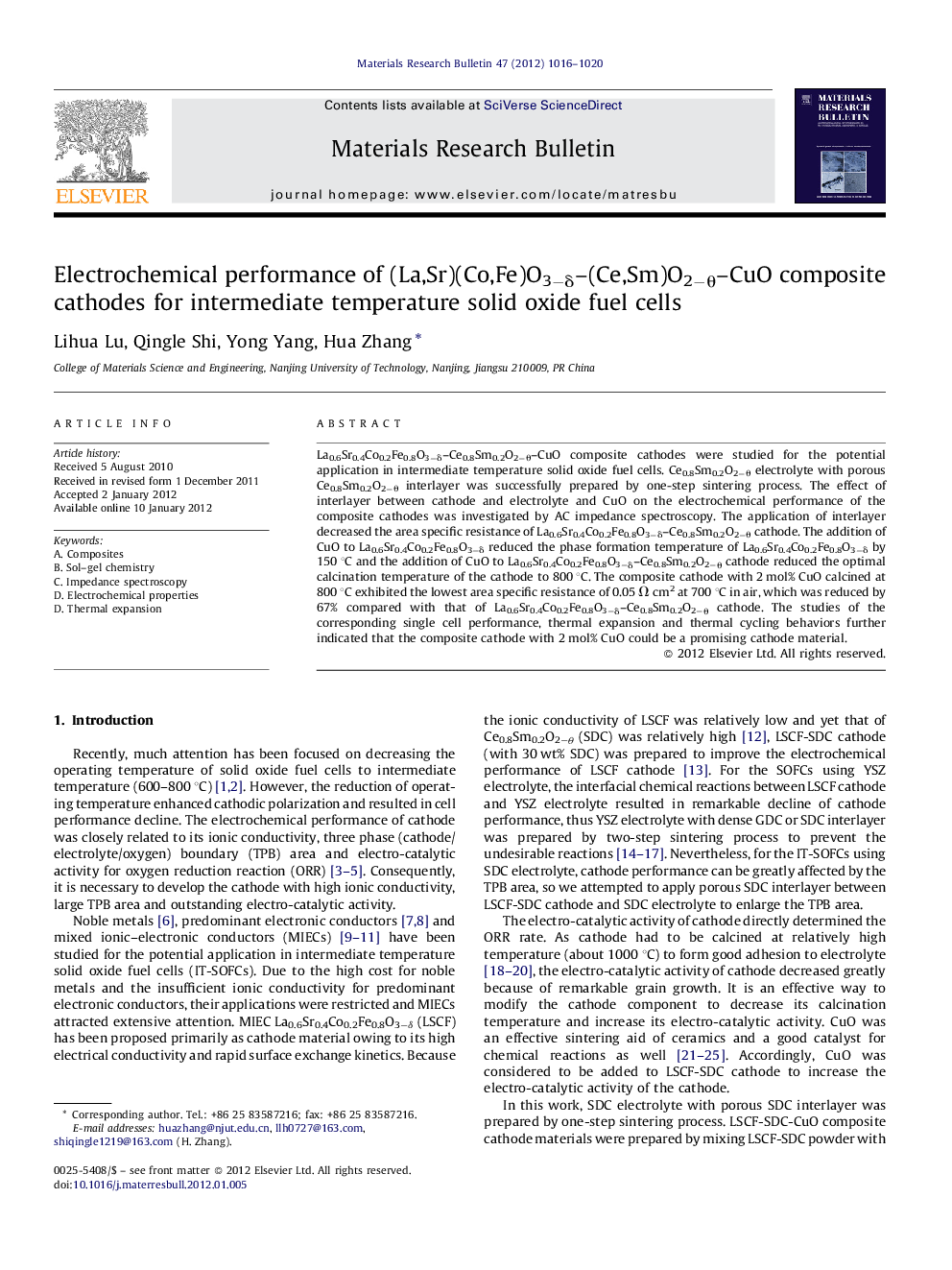| Article ID | Journal | Published Year | Pages | File Type |
|---|---|---|---|---|
| 1490455 | Materials Research Bulletin | 2012 | 5 Pages |
La0.6Sr0.4Co0.2Fe0.8O3−δ–Ce0.8Sm0.2O2−θ–CuO composite cathodes were studied for the potential application in intermediate temperature solid oxide fuel cells. Ce0.8Sm0.2O2−θ electrolyte with porous Ce0.8Sm0.2O2−θ interlayer was successfully prepared by one-step sintering process. The effect of interlayer between cathode and electrolyte and CuO on the electrochemical performance of the composite cathodes was investigated by AC impedance spectroscopy. The application of interlayer decreased the area specific resistance of La0.6Sr0.4Co0.2Fe0.8O3−δ–Ce0.8Sm0.2O2−θ cathode. The addition of CuO to La0.6Sr0.4Co0.2Fe0.8O3−δ reduced the phase formation temperature of La0.6Sr0.4Co0.2Fe0.8O3−δ by 150 °C and the addition of CuO to La0.6Sr0.4Co0.2Fe0.8O3−δ–Ce0.8Sm0.2O2−θ cathode reduced the optimal calcination temperature of the cathode to 800 °C. The composite cathode with 2 mol% CuO calcined at 800 °C exhibited the lowest area specific resistance of 0.05 Ω cm2 at 700 °C in air, which was reduced by 67% compared with that of La0.6Sr0.4Co0.2Fe0.8O3−δ–Ce0.8Sm0.2O2−θ cathode. The studies of the corresponding single cell performance, thermal expansion and thermal cycling behaviors further indicated that the composite cathode with 2 mol% CuO could be a promising cathode material.
Graphical abstractFigure optionsDownload full-size imageDownload as PowerPoint slideHighlights► Ce0.8Sm0.2O2−θ electrolyte with porous Ce0.8Sm0.2O2−θ interlayer was prepared. ► CuO was added to La0.6Sr0.4Co0.2Fe0.8O3−δ–Ce0.8Sm0.2O2−θ cathode. ► Interlayer application decreased the area specific resistance of cathode. ► CuO addition reduced the optimal calcination temperature of the cathode to 800 °C. ► The composite cathode with 2 mol% CuO exhibited the lowest area specific resistance.
